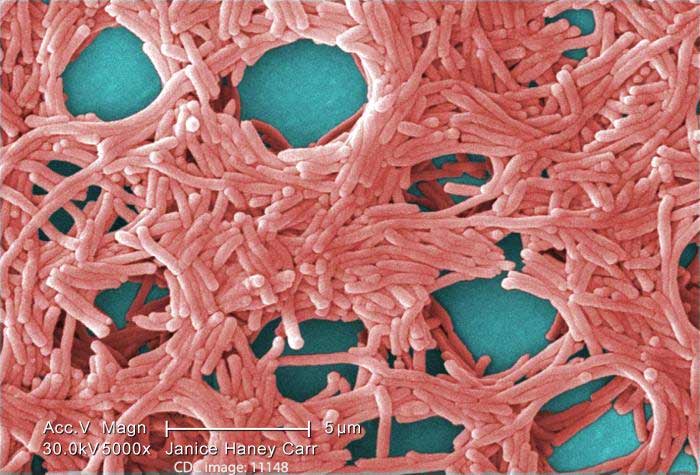A new study by the CDC found that preventable water system maintenance deficiencies were the primary cause of Legionnaires’ disease outbreaks in the United States.

Hundreds of people were sickened because building owners failed to properly maintain water systems and prevent the growth of Legionella, the bacteria that causes Legionnaires’ disease (LD). People are sickened when they breathe in water mist contaminated with Legionella. Even a few cells of this dangerous pathogen can cause life threatening pneumonia.
The number of people who contract this type of pneumonia each year is alarming: “Currently, approximately 5,000 cases of Legionnaires’ disease are reported to CDC each year; however, Legionnaires’ disease might be underdiagnosed” (CDC). In general, a case of LD is not investigated unless there is an outbreak of illness, meaning 2 or more people appear to have been sickened by the same source.
Study Analyzed 27 Legionnaires’ Disease Outbreaks

This study looked at the cause of 27 of 38 outbreaks:
“During 2000–2014, CDC participated in 38 field investigations of Legionnaires’ disease. Among 27 land-based outbreaks, the median number of cases was 10 (range = 3–82) and median outbreak case fatality rate was 7% (range = 0%–80%). Sufficient information to evaluate maintenance deficiencies was available for 23 (85%) investigations. Of these, all had at least one deficiency; 11 (48%) had deficiencies in ≥2 categories. Fifteen cases (65%) were linked to process failures, 12 (52%) to human errors, eight (35%) to equipment failures, and eight (35%) to unmanaged external changes.”
The outbreak study found that potable water was the most frequent source of Legionella pneumophila serogroup 1 exposure (56%), followed by cooling towers (22%), hot tubs (7%), industrial equipment (4%), and a decorative fountain (4%). For 2 of the outbreaks analyzed in this study, no source was found.
Over 400 people were sickened in the outbreaks, which were linked to hotels, motels, resorts, hospitals and nursing homes. Of the 415 people sickened, 65 died.
In 7 of the 9 health care-associated outbreaks, people sickened included employees, visitors, or outpatients who did not stay overnight at the facility. Contaminated water mist can travel far from the source of contamination.
Water System Maintenance Deficiencies
The most frequent deficiencies associated with outbreaks studied by the CDC were as follows (many outbreaks had more than one deficiency):
- process failures (65%);
- human errors (52%);
- equipment failures (35%); and
- unmanaged external changes (35%);
- inadequate water disinfectanat levels (70%);
- water temperatures in the optimal range for Legionella growth (52%).
In buildings with hot tubs and decorative fountains, indications of inadequate maintenance were almost always noted. Among the seven investigations where outbreaks were believed to be associated with unmanaged external changes, nearby construction (43%) and problems with water mains (43%) were most frequently noted. Three buildings had water management programs; however, the occurrence of outbreaks suggests those programs were inadequate.
Get Legal Help
Our Legionnaires’ disease attorneys represented several people sickened in the outbreaks analyzed in this CDC study. They also represented families with wrongful death claims. Our lead lawyers for our LD cases are Fred Pritzker, Eric Hageman and David Coyle.
Our law firm is one of the very few in the United States that has successfully represented a number of people sickened in Legionnaires’ disease outbreaks. You can contact our firm for a free case evaluation about a lawsuit for compensation, including money for medical bills, pain and suffering, lost income and other damages.
Source: Garrison LE, Kunz JM, Cooley LA, et al. Vital Signs: Deficiencies in Environmental Control Identified in Outbreaks of Legionnaires’ Disease — North America, 2000–2014. MMWR Morb Mortal Wkly Rep. ePub: 7 June 2016. DOI: http://dx.doi.org/10.15585/mmwr.mm6522e1